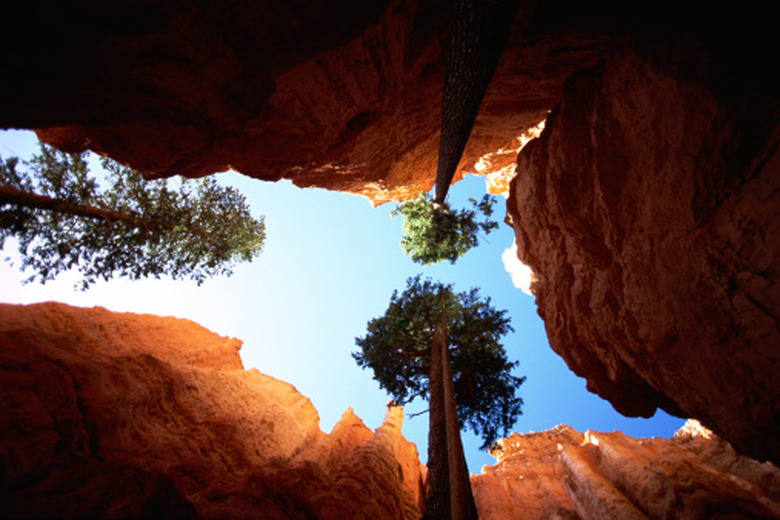Rodents Of Arizona
The northern region of Arizona provides rocky slopes and coniferous forests, which are able to accommodate the state's rodent population. Temperatures are cooler throughout the year in northern Arizona due to the region's high elevation. Only certain spots in southern Arizona, such as Mount Graham, are habitable for rodents. The Arizona Game and Fish Department track the state's rodent population to ensure their survival.
Stephen's Woodrat
Stephen's Woodrat
Stephen's woodrat, or Neotoma stephensi, is only found in the mountainous regions of northern Arizona, northwestern New Mexico and southern Utah. These rodents live at the base of trees in rocky environments. Stephen's woodrats have hair on their tails, which is indicative of rats native to the Western Hemisphere. The diet of the herbivorous Stephen's woodrat consists of berries, seeds and vegetation of its home tree.
Long-tailed Vole
Long-tailed Vole
Found in Northeast Arizona, long-tailed voles, or Microtus longicaudus, are small rodents with tails approximately half of their body length; a long-tailed vole's body length is approximately 6 to 8 inches. Long-tailed voles have a variety of habitats, including dry grasslands during the summer and rocky mountain slopes in the winter. These rodents are herbivorous and primarily dine on fungi, roots, tree bark and grasses.
Great Basin Pocket Mouse
Great Basin Pocket Mouse
The Great Basin pocket mouse, named after the Great Basin High Desert, dwells in northern Arizona. The scientific name for this mouse is Perognathus parvus. Adult Great Basin pocket mice can grow up to 12 inches in length. This mouse is omnivorous since it eats vegetation, seeds and invertebrates. The habitat for this rodent is rocky, mountainous slopes. From October through March, Great Basin pocket mice hibernate; these mice breed before they go into their dormant phase.
Abert's Squirrel
Abert's Squirrel
Also called the tassel-eared squirrel, Abert's squirrel primarily lives in Colorado, but is also found in ponderosa pine and douglas-fir forests in northern Arizona. This tree-dwelling squirrel is also found on Arizona's Kaibab Plateau. According the U.S. Forest Service, these squirrels also have been seen on Mount Graham in southern Arizona. The tip of this squirrel's ears have tassels less than an inch tall. When they mature, Abert's squirrels grow up to 2 feet in length.
Arizona Chisel-toothed Kangaroo Rat
Arizona Chisel-toothed Kangaroo Rat
The Arizona chisel-toothed kangaroo rat, or Dipodomys microps leucotis, is noted for the shape of its front teeth, which resemble a chisel. This rat is also known as the House Rock Valley kangaroo rat and Marble Canyon kangaroo rat, due to their distribution in House Rock Valley and Marble Canyon. This rat grows up to 5 inches and has a long, tufted tail. Arizona chisel-toothed kangaroo rats eat saltbush as a part of their diet and are able to extract the salt from vegetation while retaining water.
Cite This Article
MLA
Davis, Skip. "Rodents Of Arizona" sciencing.com, https://www.sciencing.com/rodents-arizona-8365915/. 22 November 2019.
APA
Davis, Skip. (2019, November 22). Rodents Of Arizona. sciencing.com. Retrieved from https://www.sciencing.com/rodents-arizona-8365915/
Chicago
Davis, Skip. Rodents Of Arizona last modified March 24, 2022. https://www.sciencing.com/rodents-arizona-8365915/
